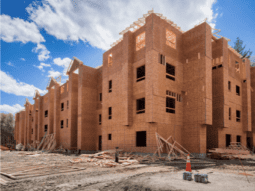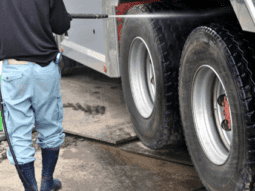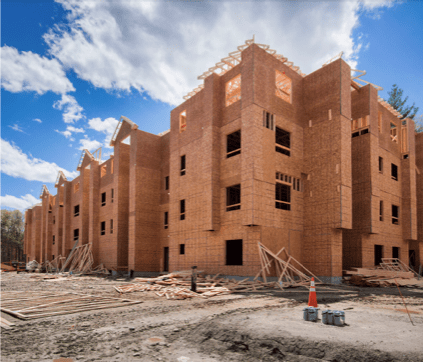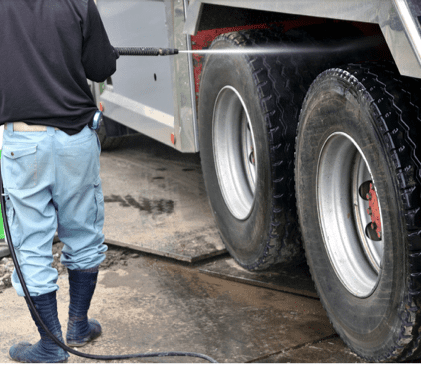Prevent Construction Pollution
Pinellas County’s stormwater ordinance, Article VI, Chapter 58, is intended to protect the water quality and natural habitat of creeks, lakes and marine waters that receive discharges from our drainage system. The ordinance states that any discharge to the drainage system or to a waterway that is not composed entirely of stormwater is prohibited.
Section 58-246 specifies that construction sites must be contained, to the maximum extent practicable using Best Management Practices (BMPs), to prevent vehicle track out, accidental discharge or runoff of construction materials, including sediment, mud, soil, sand, rubble, concrete or any other building or site materials.
Pollutants of any kind, including contaminated wash water and construction materials, may not enter the street, storm drain or gutter. Violators of the stormwater ordinance may be fined up to $10,000 per day, and payment for cleanup costs may be required.
Common Construction Site Violations
Under the Federal Clean Water Act, counties and municipalities are required to reduce the amount of stormwater pollution entering our waterways. Each government agency is issued a stormwater permit, also known as a National Pollutant Discharge Elimination System (NPDES) permit.
Among its functions, the NPDES regulates construction activities that discharge stormwater to the County’s right-of-way (ROW) drainage network and the surface waters of the County’s sewer system.
Common construction site violations include:
- Construction track-out to the County ROW.
- Turbid stormwater discharged to the sewer system.
- Sediment impacts to County stormwater structures.
- Illicit spills, such as petroleum products, to the sewer system.
- Trash and construction debris clogging the sewer system.


Proper Construction Site Practices
Sediment and other pollutants from construction sites that make it into our waterways can do great harm. That’s why Best Management Practices (BMPs) must be maintained during construction activity. These include silt fencing, turbidity curtains, inlet protection and construction entrances.
- All construction sites must have a qualified inspector responsible for the inspection and notification of BMP maintenance to the responsible contractor. The Florida Department of Environmental Protection offers a training and certification program.
- All BMPs must be inspected at least once a week and after a rain event of a half inch or more.
- Perimeter controls such as silt fencing, turbidity curtains, diversions and construction entrances must be installed before mass grading occurs.
- All construction equipment such as dump trucks, tractors, dozers and concrete trucks must be washed at locations where the runoff will not reach the sewer system.
- Maintenance and repair of construction equipment must be located and designed so that pollutants — such as oils, fuels, solvents — will not enter the sewer system.
- Soil stockpiles must be properly located and appropriate BMPs (silt fencing, stabilization, tarps) must be implemented to prevent off-site sediment impacts.
- Appropriate concrete washout areas must be located on site and properly contained.
- Phase grading and excavation activities must be used to minimize soil disturbance when possible.
- Disturbed soil exposed for seven days or more must be appropriately stabilized.
Best Practices for Painters, Remodelers and Concrete Workers
- Do not operate small mixers in the road right-of-way. Set up small mixers on tarps or heavy plastic drop cloths. Contain contaminated water on-site.
- Never dispose of masonry washout into the street, storm drain or drainage ditches. Empty mixing containers and wash out chutes onto a designated concrete washout area.
- Sweep up and dispose of small amounts of excess dry concrete, grout and mortar in the trash.
- Do not place fill materials, soil or compost piles on the sidewalk or street.
- Always store both dry and wet materials under cover, protected from wind, rainfall and runoff, and away from storm drains and waterways.
- Wash concrete and/or brick areas only when wash water can flow onto pervious areas. Drain wash water onto a surface which has been bermed so that materials can dry and be reused, recycled or placed in the trash.
- Ensure your on-site dumpster is covered at all times.
- Schedule grading and excavation projects for dry weather. Cover excavated material and stockpiles of asphalt, sand, etc. with plastic tarps to protect from wind and rainfall.
- Prevent erosion by temporarily or permanently stabilizing loose soil.
Working With Paint Products
- Keep all liquid paint products away from the street, gutter and storm drains. Liquid residues from thinners, solvents, flues and cleaning fluids are hazardous waste. When thoroughly dry, used brushes, rags, drop cloths and empty paint cans (lids off) may be disposed as trash.
- Never put flammable products such as oil-based paint or thinner down any drain or into the garbage!
- Never clean brushes or rinse paint containers into a street, gutter or storm drain. For oil-based paints, get paint out of brushes as much as possible, then rinse in the sink or onto a heavy plastic drop cloth. Let dry and then dispose in the trash.
- Chemical paint stripping residue, including saturated rags, are hazardous waste.
- Chips and dust from paints containing lead or tributyltin are hazardous waste.
- When stripping or cleaning building exteriors with high-pressure water, use sandbags or berms, or seal the storm drain with plugs or rubber mats.
Pool Construction & Maintenance Best Management Practices
Streets and storm drains are part of the drainage system, which protects developed areas from flooding. Everything that enters the streets and storm drains flows directly into waterways without treatment and can cause pollution. Disposing of pool construction or maintenance discharge materials in the street or storm drain is prohibited by law.
Follow these Pool Construction BMPs to prevent pollutants — such as paints, solvents, mortar and other harsh chemicals — and their contaminated wash water from entering our storm drains and polluting our waterways.
- Before draining, ensure pool water contains 0.01 mg/L of chlorine or less.
- Drain water to vegetated areas such as lawns or gardens. Ensure this does not cause erosion.
- Dispose of particulate filter material, such as diatomaceous earth, in a dumpster or other approved receptacle.
- During pool construction, observe all standard construction best management practices. These include protecting storm inlets on- and off-site with appropriate protection devices.
- Do not store construction materials (sand, gravel, etc.) in the road. Keep all materials within the construction site properly.
- Have a concrete equipment washout area at construction sites where masonry or concrete waste can harden.
- If an equipment leak occurs, make sure the leak is repaired as soon as possible. Use an absorbent material, such as clay or kitty litter, to collect the free product and dispose of the absorbed materials in the trash. Utilize a drip pan to collect any leaking fluids, and recycle or dispose of the fluids properly. Train all personnel in proper procedures to avoid and clean up spills.
More Information
- For questions about waste disposal, contact Pinellas County Solid Waste.
- For more information on what you can do to keep our waterways clean, or to report pollution, call the Environmental Management Hotline at (727) 464-4425 or email watershed@pinellas.gov.
- To report illegal dumping or for more information, call (727) 464-4425, Monday through Friday from 8 a.m. to 5 p.m.

